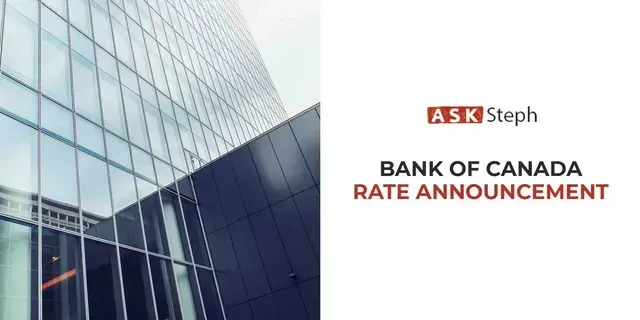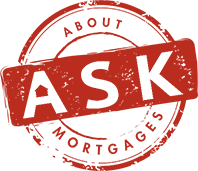Your Financial Plan to Becoming Debt-Free Post-COVID
Stephanie Barritt • May 20, 2020

Although everyone is experiencing the impact of COVID-19 differently, one thing has become evident. As a result of the pandemic, we’re all paying closer attention to our finances. Looking at life post-COVID, it’s going to be essential to have a financial plan.
Here are some action points to consider as life returns to some sense of routine and as you plan your financial future.
Pay off your revolving consumer debt first.
If you have consumer debt, or if you’ve gone into debt to cover your expenses through social-isolation, paying off any consumer debt should be your priority. This would be your credit cards and line of credits.
You want to start by making any additional payments on the highest interest debt while maintaining minimum payments on everything else. Once the first debt is paid off, roll all your payments onto your next debt. And so on, until you’ve paid off all your revolving consumer debt.
Set up an emergency fund second.
It doesn’t make much sense to put money in a bank account for an emergency fund when you have revolving debt that is incurring interest. Once you’ve paid off all your revolving debt, you will still have access to that money again should you need it, which acts like an expensive emergency fund before you have money in the bank.
Finance experts suggest you should have 3-6 months in a savings account in case you lose your job or experience unforeseen health issues. And in the face of the most recent global pandemic; the unexpected has just happened, this is the proof that the experts are right, and having an emergency fund is an excellent idea.
Then pay off your instalment loans.
With all your revolving debt paid off and a healthy amount of money in the bank to prepare for the next national emergency, you should start paying off your instalment loans, like a car loan or student loans. Start with the highest interest loans first, working your way through until everything is paid off. Most loans will allow you to make additional payments, double-up on payments when possible.
Start saving for a downpayment.
If you don’t yet own a home, and you would like to work through a plan to get you there, please contact me anytime. Although you don’t have to be completely debt-free to qualify for a mortgage, the less money you owe, the more money you are allowed to borrow in mortgage financing.
And the same principles used to pay down your debt can be used to save for a downpayment. The more money you have as a downpayment, the more you qualify for, and the less interest you will pay over the long run.
If you already own a home, you’re debt-free, and you have a healthy emergency fund, you should consider accelerating your mortgage payments.
Accelerate your payment frequency.
Making the change from monthly payments to accelerated bi-weekly payments is one of the easiest ways you can make a difference to the bottom line of your mortgage. Most people don’t even notice the difference.
A traditional mortgage splits the amount owing to 12 equal monthly payments. Accelerated biweekly is simply taking a regular monthly payment and dividing it in two, but instead of making 24 payments, you make 26. The extra two payments accelerate the pay down of your mortgage.
Increase your mortgage payment amount.
Unless you opted for a “no-frills” mortgage, chances are you can increase your regular mortgage payment by 10-25%. This is an excellent option if you have some extra cash flow to spend in your budget. This money will go directly towards paying down the principal amount owing on your mortgage and isn’t a prepayment of interest.
The more money you can pay down when you first get your mortgage, the better, as it has a compound effect, meaning you will pay less interest over the life of your mortgage.
Also, by voluntarily increasing your mortgage payment, it’s kind of like signing up for a long term forced savings plan where equity builds in your house rather than your bank account.
Make a lump-sum payment.
Again, unless you have a “no-frills” mortgage, you should be able to make bulk payments to your mortgage. Depending on your lender and your mortgage product, you should be able to put down anywhere from 10-25% of the original mortgage balance. Some lenders are particular about when you can make these payments; however, if you haven’t taken advantage of a lump sum payment yet this year, you will be eligible.
Review your options regularly.
As your mortgage payments are withdrawn from your account regularly, it’s easy to simply put your mortgage payments on auto-pilot, especially if you have opted for a five year fixed term.
Regardless of the terms of your mortgage, it’s a good idea to give your mortgage an annual review. There may be opportunities to refinance and lower your interest rate, or maybe not. Still, the point of reviewing your mortgage annually is that you are conscious about making decisions regarding your mortgage.
Want to review your existing mortgage, or discuss getting a new one?
Contact me anytime!
RECENT POSTS

Bank of Canada maintains policy rate at 2.1/4%. FOR IMMEDIATE RELEASE Media Relations Ottawa, Ontario December 10, 2025 The Bank of Canada today held its target for the overnight rate at 2.25%, with the Bank Rate at 2.5% and the deposit rate at 2.20%. Major economies around the world continue to show resilience to US trade protectionism, but uncertainty is still high. In the United States, economic growth is being supported by strong consumption and a surge in AI investment. The US government shutdown caused volatility in quarterly growth and delayed the release of some key economic data. Tariffs are causing some upward pressure on US inflation. In the euro area, economic growth has been stronger than expected, with the services sector showing particular resilience. In China, soft domestic demand, including more weakness in the housing market, is weighing on growth. Global financial conditions, oil prices, and the Canadian dollar are all roughly unchanged since the Bank’s October Monetary Policy Report (MPR). Canada’s economy grew by a surprisingly strong 2.6% in the third quarter, even as final domestic demand was flat. The increase in GDP largely reflected volatility in trade. The Bank expects final domestic demand will grow in the fourth quarter, but with an anticipated decline in net exports, GDP will likely be weak. Growth is forecast to pick up in 2026, although uncertainty remains high and large swings in trade may continue to cause quarterly volatility. Canada’s labour market is showing some signs of improvement. Employment has shown solid gains in the past three months and the unemployment rate declined to 6.5% in November. Nevertheless, job markets in trade-sensitive sectors remain weak and economy-wide hiring intentions continue to be subdued. CPI inflation slowed to 2.2% in October, as gasoline prices fell and food prices rose more slowly. CPI inflation has been close to the 2% target for more than a year, while measures of core inflation remain in the range of 2½% to 3%. The Bank assesses that underlying inflation is still around 2½%. In the near term, CPI inflation is likely to be higher due to the effects of last year’s GST/HST holiday on the prices of some goods and services. Looking through this choppiness, the Bank expects ongoing economic slack to roughly offset cost pressures associated with the reconfiguration of trade, keeping CPI inflation close to the 2% target. If inflation and economic activity evolve broadly in line with the October projection, Governing Council sees the current policy rate at about the right level to keep inflation close to 2% while helping the economy through this period of structural adjustment. Uncertainty remains elevated. If the outlook changes, we are prepared to respond. The Bank is focused on ensuring that Canadians continue to have confidence in price stability through this period of global upheaval. Information note The next scheduled date for announcing the overnight rate target is January 28, 2026. The Bank’s next MPR will be released at the same time.

Wondering If Now’s the Right Time to Buy a Home? Start With These Questions Instead. Whether you're looking to buy your first home, move into something bigger, downsize, or find that perfect place to retire, it’s normal to feel unsure—especially with all the noise in the news about the economy and the housing market. The truth is, even in the most stable times, predicting the “perfect” time to buy a home is incredibly hard. The market will always have its ups and downs, and the headlines will never give you the full story. So instead of trying to time the market, here’s a different approach: Focus on your personal readiness—because that’s what truly matters. Here are some key questions to reflect on that can help bring clarity: Would owning a home right now put me in a stronger financial position in the long run? Can I comfortably afford a mortgage while maintaining the lifestyle I want? Is my job or income stable enough to support a new home? Do I have enough saved for a down payment, closing costs, and a little buffer? How long do I plan to stay in the property? If I had to sell earlier than planned, would I be financially okay? Will buying a home now support my long-term goals? Am I ready because I want to buy, or because I feel pressure to act quickly? Am I hesitating because of market fears, or do I have legitimate concerns? These are personal questions, not market ones—and that’s the point. The economy might change tomorrow, but your answers today can guide you toward a decision that actually fits your life. Here’s How I Can Help Buying a home doesn’t have to be stressful when you have a plan and someone to guide you through it. If you want to explore your options, talk through your goals, or just get a better sense of what’s possible, I’m here to help. The best place to start? A mortgage pre-approval . It’s free, it doesn’t lock you into anything, and it gives you a clear picture of what you can afford—so you can move forward with confidence, whether that means buying now or waiting. You don’t have to figure this out alone. If you’re curious, let’s talk. Together, we can map out a homebuying plan that works for you.



